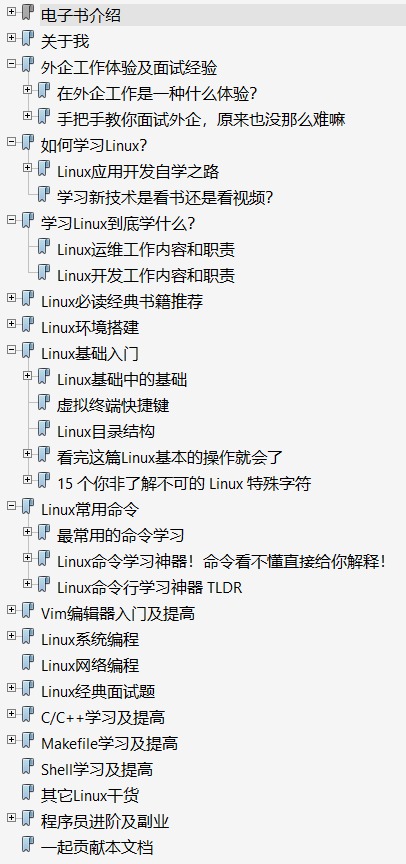1、Spring Security介绍
Spring security,是一个强大的和高度可定制的身份验证和访问控制框架。它是确保基于Spring的应用程序的标准 ——来自官方参考手册
Spring security 和 shiro 一样,具有认证、授权、加密等用于权限管理的功能。和 shiro 不同的是,Spring security拥有比shiro更丰富的功能,并且,对于Springboot而言,Spring Security比Shiro更合适一些,因为都是Spring家族成员。今天,我们来为SpringBoot项目集成Spring Security。
本文所使用的版本:
SpringBoot : 2.2.6.RELEASE
Spring Security : 5.2.2.RELEASE
2、配置Spring Security
在SpringBoot中集成Spring Security很简单,只需要在pom.xml中添加下面代码就行:
<dependency>
<groupId>org.springframework.boot</groupId>
<artifactId>spring-boot-starter-security</artifactId>
</dependency>
这里可以不指定Spring Security的版本号,它会根据SpringBoot的版本来匹配对应的版本,SpringBoot版本是 2.2.6.RELEASE,对应Spring Security的版本是5.2.2.RELEASE。
然后,我们就可以将springboot启动了。
当我们尝试访问项目时,它会跳转到这个界面来:
对!在此之前,你什么也不用做。这就是Spring Security的优雅之处。你只需要引入Spring Security的包,它就能在你的项目中工作。因为它已经帮你实现了一个简单的登陆界面。根据官方介绍,登录使用的账号是user,密码是随机密码,这个随机密码可以在控制台中找到,类似这样的一句话:
Using generated security password: 1cb77bc5-8d74-4846-9b6c-4813389ce096
Using generated security password后面的的就是系统给的随机密码,我们可以使用这个密码进行登录。随机密码在每一次启动服务后生成(如果你配置了热部署devtools,你得随时留意控制台了,因为每当你修改了代码,系统会自动重启,那时随机密码就会重新生成)。
当然,这样的功能一定不是你想要的,也一定不会就这样拿给你的用户使用。那么,接下来,让我们把它配置成我们想要的样子。
要实现自定义配置,首先要创建一个继承于WebSecurityConfigurerAdapter的配置类:
import org.springframework.context.annotation.Configuration;
import org.springframework.security.config.annotation.web.configuration.EnableWebSecurity;
import org.springframework.security.config.annotation.web.configuration.WebSecurityConfigurerAdapter;
@Configuration
@EnableWebSecurity
public class SecurityConfig extends WebSecurityConfigurerAdapter {
}
这里使用了**@EnableWebSecurity注解,这个注解是Spring Security**用于启用web安全的注解。具体实现,这里就不深入了。
要实现自定义拦截配置,首先得告诉Spring Security,用户信息从哪里获取,以及用户对应的角色等信息。这里就需要重写WebSecurityConfigurerAdapter的configure(AuthenticationManagerBuilder auth)方法了。这个方法将指使Spring Security去找到用户列表,然后再与想要通过拦截器的用户进行比对,再进行下面的步骤。
Spring Security的用户存储配置有多个方案可以选择,包括:
- 内存用户存储
- 数据库用户存储
- LDAP用户存储
- 自定义用户存储
我们分别来看看这几种用户存储的配置方法:
1.内存用户存储
此配置方式是直接将用户信息存储在内存中,这种方式在速度上无疑是最快的。但只适用于有限个用户数量,且这些用户几乎不会发生改变。我们来看看配置方法:
@Override
protected void configure(AuthenticationManagerBuilder auth) throws Exception {
auth.inMemoryAuthentication().passwordEncoder(passwordEncoder())
.withUser("zhangsan").password(passwordEncoder().encode("123456")).authorities("ADMIN")
.and()
.withUser("lisi").password(passwordEncoder().encode("123456")).authorities("ORDINARY");
}
private PasswordEncoder passwordEncoder() {
return new BCryptPasswordEncoder();
}
可以看到,AuthenticationManagerBuilder使用构造者方式来构建的。在上面方法中,先调用了inMemoryAuthentication()方法,它来指定用户存储在内存中。接下来又调用了passwordEncoder()方法,这个方法的作用是告诉Spring Security认证密码的加密方式。因为在Spring security5过后,必须指定某种加密方式,不然程序会报错。接下来调用的**withUser()、password()、authorities()**方法,分别是在指定用户的账号、密码以及权限名。在添加完一个用户后,要使用and()方法来连接下一个用户的添加。
如果使用这种配置方法,你会发现,在修改用户时,就必须修改代码。对于绝大多数项目来说,这种方式是满足不了需求的,至少我们需要一个注册功能。
2.数据库用户存储
将用户信息存储在数据库中,让我们可以很方便地对用户信息进行增删改查。并且还可以为用户添加除认证信息外的附加信息,这样的设计也是我们很多小心应用所采取的方式。让我们来实现以下:
@Autowired
private DataSource dataSource;
@Override
protected void configure(AuthenticationManagerBuilder auth) throws Exception {
auth.jdbcAuthentication().dataSource(dataSource).passwordEncoder(passwordEncoder())
.usersByUsernameQuery(
"select username, password, status from Users where username = ?")
.authoritiesByUsernameQuery(
"select username, authority from Authority where username = ?");
}
private PasswordEncoder passwordEncoder() {
return new BCryptPasswordEncoder();
}
调用**jdbcAuthentication()**来告诉Spring Security使用jdbc的方式来查询用户和权限,**dataSource()**方法指定数据库连接信息,**passwordEncoder()**指定密码加密规则,用户的密码数据应该以同样的方式进行加密存储,不然,两个加密方式不同的密码,匹配补上。usersByUsernameQuery()和authoritiesByUsernameQuery()方法分别定义了查询用户和权限信息的sql语句。其实,Spring security为我们默认了查询用户、权限甚至还有群组用户授权的sql,这三条默认的sql存放在org.springframework.security.core.userdetails.jdbc.JdbcDaoImpl中,有兴趣的小伙伴可以点进去看看。如果你要使用默认的,那你的表中关键性的字段必须和语句中的一致。
使用数据库来存储用户和权限等信息已经可以满足大部分的需求。但是Spring security还为我们提供了另外一种配置方式,让我们来看一下。
3.LDAP用户存储
LDAP:轻型目录访问协议,是一个开放的,中立的,工业标准的应用协议,通过IP协议提供访问控制和维护分布式信息的目录信息。简单来说,就是将用户信息存放在另外一台服务器中(当然,也可以在同一台服务器,但我们一般不这么做),通过网络来进行访问的技术。
我们来简单配置一下:
@Override
protected void configure(AuthenticationManagerBuilder auth) throws Exception {
LdapAuthenticationProviderConfigurer<AuthenticationManagerBuilder> configurer = auth.ldapAuthentication()
.userSearchBase("ou=people")
.userSearchFilter("(uid={0})")
.groupSearchBase("ou=groups")
.groupSearchFilter("member={0}");
configurer.passwordCompare()
.passwordEncoder(passwordEncoder())
.passwordAttribute("passcode");
configurer.contextSource().url("ldap://xxxxx.com:33389/dc=xxxxxx,dc=com");
}
private PasswordEncoder passwordEncoder() {
return new BCryptPasswordEncoder();
}
userSearchFilter()和groupSearchFilter()设置的是用户和群组的过滤条件,而userSearchBase()和groupSearchBase()设置了搜索起始位置,contextSource().url()设置LDAP服务器的地址。如果没有远程的服务器可以使用contextSource().root()来使用嵌入式LDAP服务器,此方式将使用项目中的用户数据文件来提供认证服务。
如果以上几种方式还不能满足我们的需求,我们可以用自定义的方式来配置。
4.自定义用户存储
自定义用户存储,就是自行使用认证名称来查找对应的用户数据,然后交给Spring Security使用。我们需要定义一个实现UserDetailsService的service类:
@Service
public class MyUserDetailsService implements UserDetailsService{
@Autowired
private UserMapper userMapper;
@Override
public UserDetails loadUserByUsername(String username) throws UsernameNotFoundException {
User user = userMapper.getUserByUsername(username);
return user == null ? new User() : user;
}
}
public class User implements UserDetails {
...
}
该类只需要实现一个方法:loadUserByUsername()。该方法需要做的是使用传过来的username来匹配一个带有密码等信息的用户实体。需要注意的是这里的User类需要实现UserDetails,也就是说,查到的信息里,必须得有Spring Security所需要的信息。
下面,让我们来继续配置:
@Configuration
@EnableWebSecurity
public class SecurityConfig extends WebSecurityConfigurerAdapter {
@Autowired
private MyUserDetailsService userDetailsService;
@Override
protected void configure(AuthenticationManagerBuilder auth) throws Exception {
auth.userDetailsService(userDetailsService)
.passwordEncoder(passwordEncoder());
}
@Bean
private PasswordEncoder passwordEncoder() {
return new BCryptPasswordEncoder();
}
}
这样的配置方法就很简单了,只需要告诉Spring Security你的UserDetailsService实现类是哪个就可以了,它会去调用**loadUserByUsername()**来查找用户。
以上就是Spring Security所提供的4种用户存储方式,接下来,需要考虑的是,怎么拦截请求。
3、请求拦截
1.安全规则
Spring Security的请求拦截配置方法是用户存储配置方法的重载方法,我们先来简单配置一下:
@Configuration
@EnableWebSecurity
public class SecurityConfig extends WebSecurityConfigurerAdapter {
@Override
protected void configure(HttpSecurity http) throws Exception {
http.authorizeRequests()
.antMatchers("/user", "/menu")
.hasRole("ADMIN")
.antMatchers("/", "/**").permitAll();
}
}
调用**authorizeRequests()**方法后,就可以添加自定义拦截路径了。**antMatchers()**方法配置了请求路径,**hasRole()和permitAll()**指定了访问规则,分别表示拥有“ADMIN”权限的用户才能访问、所有用户可以访问。
需要注意的是:这里的配置需要成对出现,并且配置的顺序也很重要。声明在前面的规则拥有更高的优先级。也就是说,如果我们将**.antMatchers("/", “/**”).permitAll()**放到了最前面,像这样:
@Override
protected void configure(HttpSecurity http) throws Exception {
http.authorizeRequests()
.antMatchers("/", "/**").permitAll()
.antMatchers("/user", "/menu")
.hasRole("ADMIN");
}
那么,下面的"/user"和 "/menu"的配置是徒劳,因为前面的规则已经指明所有路径能被所有人访问。当然权限的规则方法还有很多,我这里只列举了两个。以下为常见的内置表达式:
| 表达 | 描述 |
|---|---|
| hasRole(String role) | 返回true当前委托人是否具有指定角色。例如, hasRole('admin')默认情况下,如果提供的角色不是以“ ROLE_”开头,则会添加该角色。可以通过修改defaultRolePrefixon来自定义DefaultWebSecurityExpressionHandler。 |
hasAnyRole(String… roles) |
返回true当前委托人是否具有提供的任何角色(以逗号分隔的字符串列表形式)。例如, hasAnyRole('admin', 'user')默认情况下,如果提供的角色不是以“ ROLE_”开头,则会添加该角色。可以通过修改defaultRolePrefixon来自定义DefaultWebSecurityExpressionHandler。 |
hasAuthority(String authority) |
返回true当前委托人是否具有指定权限。例如, hasAuthority('read') |
hasAnyAuthority(String… authorities) |
返回true如果当前主体具有任何所提供的当局的(给定为逗号分隔的字符串列表)例如, hasAnyAuthority('read', 'write') |
principal |
允许直接访问代表当前用户的主体对象 |
authentication |
允许直接访问Authentication从SecurityContext |
permitAll |
始终评估为 true |
denyAll |
始终评估为 false |
isAnonymous() |
返回true当前委托人是否为匿名用户 |
isRememberMe() |
返回true当前主体是否是“记住我”的用户 |
isAuthenticated() |
true如果用户不是匿名的,则返回 |
isFullyAuthenticated() |
返回true如果用户不是匿名或记得,我的用户 |
hasPermission(Object target, Object permission) |
返回true用户是否可以访问给定权限的给定目标。例如,hasPermission(domainObject, 'read') |
hasPermission(Object targetId, String targetType, Object permission) |
返回true用户是否可以访问给定权限的给定目标。例如,hasPermission(1, 'com.example.domain.Message', 'read') |
除此之外,还有一个支持SpEL表达式计算的方法,它的使用方法如下:
@Override
protected void configure(HttpSecurity http) throws Exception {
http.authorizeRequests()
.antMatchers("/user", "/menu")
.access("hasRole('ADMIN')")
.antMatchers("/", "/**").permitAll();
}
它所实现的规则和上面的方法一样。Spring Security还提供了其他丰富的SpEL表达式,如:
| 表达 | 描述 |
|---|---|
hasRole(String role) |
返回true当前委托人是否具有指定角色。例如, hasRole('admin')默认情况下,如果提供的角色不是以“ ROLE_”开头,则会添加该角色。可以通过修改defaultRolePrefixon来自定义DefaultWebSecurityExpressionHandler。 |
hasAnyRole(String… roles) |
返回true当前委托人是否具有提供的任何角色(以逗号分隔的字符串列表形式)。例如, hasAnyRole('admin', 'user')默认情况下,如果提供的角色不是以“ ROLE_”开头,则会添加该角色。可以通过修改defaultRolePrefixon来自定义DefaultWebSecurityExpressionHandler。 |
hasAuthority(String authority) |
返回true当前委托人是否具有指定权限。例如, hasAuthority('read') |
hasAnyAuthority(String… authorities) |
返回true如果当前主体具有任何所提供的当局的(给定为逗号分隔的字符串列表)例如, hasAnyAuthority('read', 'write') |
principal |
允许直接访问代表当前用户的主体对象 |
authentication |
允许直接访问Authentication从SecurityContext |
permitAll |
始终评估为 true |
denyAll |
始终评估为 false |
isAnonymous() |
返回true当前委托人是否为匿名用户 |
isRememberMe() |
返回true当前主体是否是“记住我”的用户 |
isAuthenticated() |
true如果用户不是匿名的,则返回 |
isFullyAuthenticated() |
返回true如果用户不是匿名或记得,我的用户 |
hasPermission(Object target, Object permission) |
返回true用户是否可以访问给定权限的给定目标。例如,hasPermission(domainObject, 'read') |
hasPermission(Object targetId, String targetType, Object permission) |
返回true用户是否可以访问给定权限的给定目标。例如,hasPermission(1, 'com.example.domain.Message', 'read') |
2.登录
如果此时,我们有自己的登录界面,需要替换掉Spring Security所提供的默认的界面,这时可以用**fromLogin()和loginPage()**方法来实现:
@Override
protected void configure(HttpSecurity http) throws Exception {
http.authorizeRequests()
.antMatchers("/user", "/menu")
.access("hasRole('ADMIN')")
.antMatchers("/", "/**").permitAll()
.and()
.formLogin()
.loginPage("/login");
}
这便将登录地址指向了“/login”。如果需要指定登录成功时,跳转的地址,可以使用**defaultSuccessUrl()**方法:
.and()
.formLogin()
.loginPage("/login")
.defaultSuccessUrl("/home")
此时用户登录过后,将跳转到主页来。
下面,我们来看看登出。
3.登出
和登录类似的,可以使用**logout()和logoutSuccessUrl()**方法来实现:
.and()
.logout()
.logoutSuccessUrl("/login")
上面例子中,用户登出后将跳转到登录界面。
4、小结
至此,我们已基本了解了Spring Security配置,可以将它配置成我们想要的样子(基本)。其实Spring Security能做的事还有很多,光看我这篇文章是不够的。学习它最有效的方法就是阅读官方文档。里面有关于Spring Security最全最新的知识!(官网地址:https://spring.io/projects/spring-security)
最后,最近很多小伙伴找我要Linux学习路线图,于是我根据自己的经验,利用业余时间熬夜肝了一个月,整理了一份电子书。无论你是面试还是自我提升,相信都会对你有帮助!目录如下:
免费送给大家,只求大家金指给我点个赞!
也希望有小伙伴能加入我,把这份电子书做得更完美!
有收获?希望老铁们来个三连击,给更多的人看到这篇文章
推荐阅读:
共同学习,写下你的评论
暂无评论
作者其他优质文章








